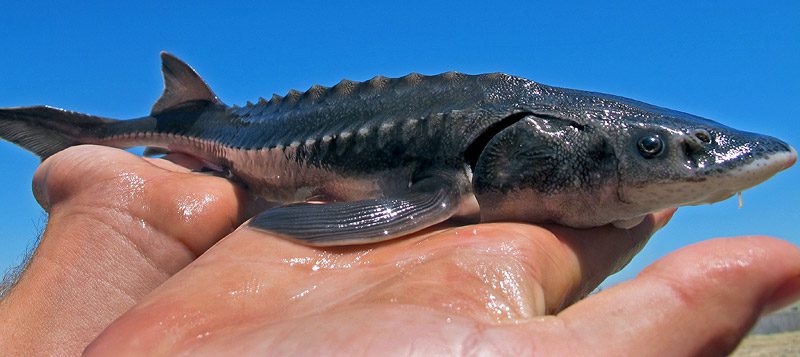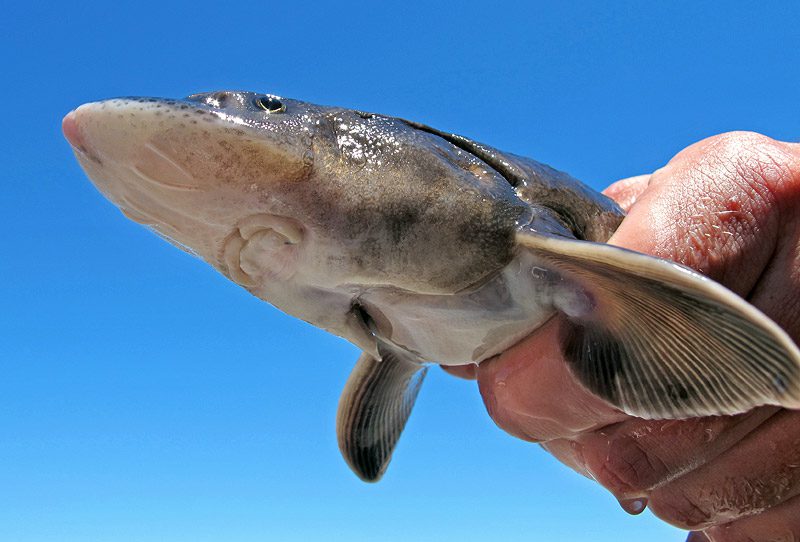Wednesday August 17, 2011
…sturgeon that is. White sturgeon (Acipenser transmontanus) are ancient giants found from Cook Inlet, Alaska to Ensenada, Mexico. They are the largest freshwater fish in North America and can weigh over 1,500 pounds, grow to over 20 feet in length, and live for over 100 years. Probably due to their large size, they have even been featured on Animal Planet’s River Monsters, but they hardly qualify as a monster. In fact, they don’t even have teeth. They are bottom-dwelling fish that detect prey with smell and highly sensitive nerve endings located on their four chin barbels. They use long flexible lips to suck up prey species. Juvenile sturgeon eat mainly crustaceans, mollusks, insect larvae, and small invertebrates; while adults feed on shrimp, crabs, clams, and small fish.
Young sturgeon grow rapidly during their first year, but in subsequent years their growth slows considerably. It takes 10-12 years for male white sturgeon (30-41 in; 75-105 cm) and 12-16 years for females (37-53 in; 95-135 cm) to reach sexual maturity (Moyle 2002). White sturgeon fecundity increases with size and large females can produce up to 200,000 eggs, but they only spawn every 2-4 years. Because of their late age of sexual maturity, infrequent spawning, and size-dependent fecundity, they are vulnerable to harvest pressures. In California only recreational fishing is allowed, and only fish 46-66 inches may be retained. This gives individuals a greater chance of reaching reproductive age and protects the largest individuals that contribute the most to reproduction.


